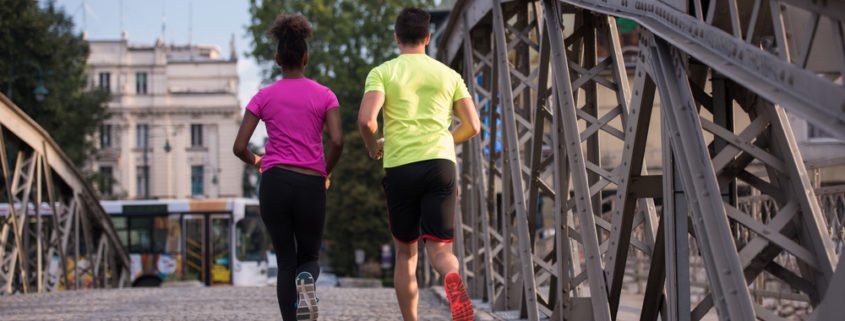Running and Back Pain
In recent years, running has seen a huge spike in popularity. More and more athletes are participating in half and full marathons, as well as “fun” running events—where runners are doused with colorful powders, run through muddy obstacle courses, or have to outrun “zombies.” Besides the “fun” element added to running in recent years, running remains popular due to its affordability and accessibility. All you really need is a good pair of running shoes and a road (or treadmill!).
Although running is an easy and excellent form of aerobic exercise, it can be a source of back pain for many athletes. The repetitive jarring of the spine from the up-and-down motion, combined with a hard running surface, can worsen a current or emerging back problem.
How Can Running Cause Back Pain, and What Can I Do to Avoid it?
By knowing what can cause back pain while running and improving your technique, you can help decrease your chances of experiencing painful symptoms.
The Problem: Force and jarring.
Joints and discs are jarred and compressed by the force of the body leaving the ground and landing on every stride when running or jogging. Running on hard surfaces, such as concrete or asphalt, can be especially jarring to the back.
The Solution: Use proper form and vary your training ground.
Use form that reduces the up-and-down stride motion and focuses on forward motion while running; this means leading with the chest, keeping the head tall and balanced over the chest. Grass, trails, padded tracks, and treadmills soften the force of impact and also produce stronger legs. Because your feet sink into soft surfaces, your body works harder to push off than when running on concrete. Try to maintain a flat running course, as leaning forward to climb a tall hill can put pressure on the back, and avoid slanted sidewalks and road shoulders, as running on an uneven surface can also cause damage.
The Problem: Weak core and leg muscles.
The back muscles have to work to keep the body upright and in good posture during the run. Weak abdominal muscles don’t support the back well, thus straining the hip muscles and putting tension on the lower back. Also, as you run, your gluteals and hamstrings don’t get worked as hard as your hip flexors or quadriceps. This imbalance can put extra pressure on your back to make up for weaker leg muscles.
The Solution: Build strong abs, glutes, and hamstrings.
Do specific exercises to target weaker muscles. Cross training can also give you a break from running—and possible back pain—by working other muscle groups and avoiding repetitive overuse. Also be sure to stretch your muscles completely before beginning each run to avoid additional injury from tight muscles.
The Problem: Bad feet.
Flat feet, fallen arches, and weakness in the feet can also be to blame for back pain. The arch absorbs shock and takes the weight and pressure from each foot strike. If the arch has fallen, it sends a ripple effect up the back, causing undue stress and possible injury.
The Solution: Wear proper running shoes.
Visit a specialty running store to be fitted with shoes for your foot type. Employees can assess your running technique and recommend the right shoes or insoles, if needed, for your technique and training goals.
Running can cause back pain that ranges from a dull and achy back to decreased flexibility and mobility to injured discs and fractures. While some injuries can be treated at home, others may require a doctor’s care. If you have followed the above suggestions and still suffer from chronic back pain, it’s time to give us a call.



